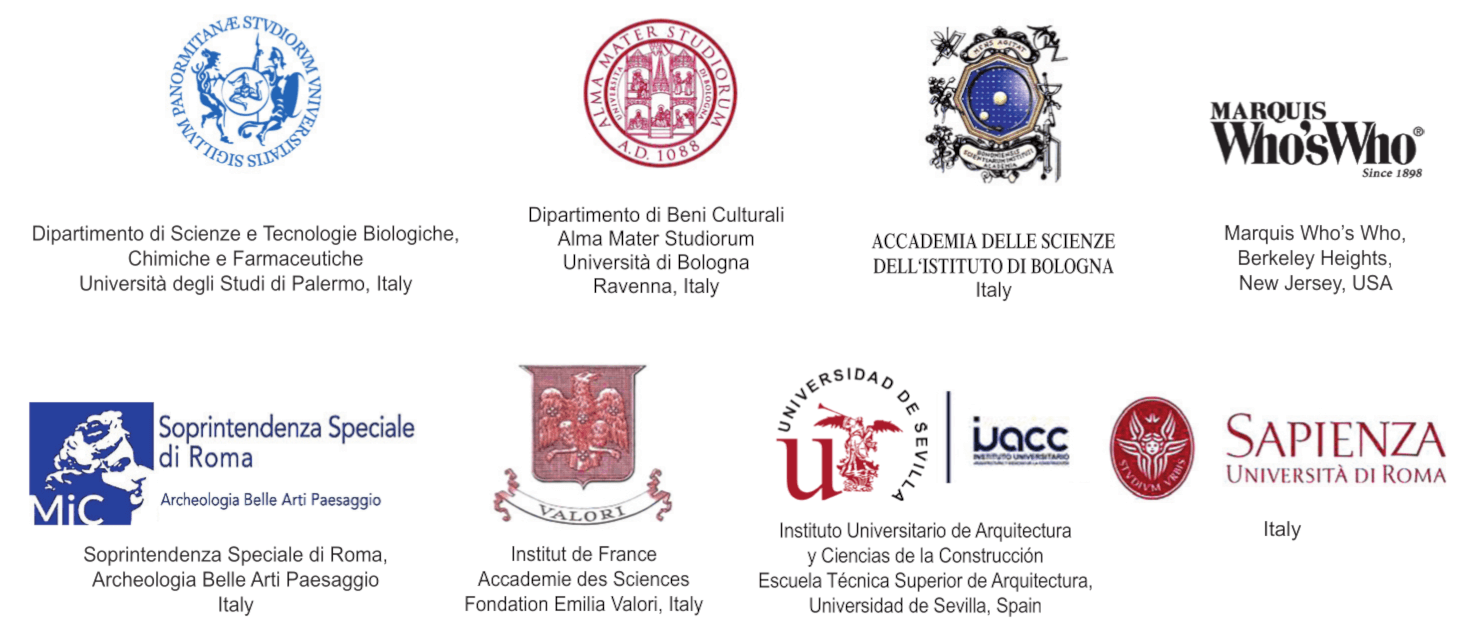On the Effect of Salt and its Removal from the Fibers of the Wool Weavings Found with the Salt Men in Chehr Abad Salt Mine, Zanjan
DOI:
https://doi.org/10.6092/issn.1973-9494/7171Keywords:
salt, woven, electron microscope, elemental analysis, degradationAbstract
Examination of the salt men and their accompanying objects in Chehr Abad Salt Mine, Zanjan, has opened up an interesting research area for archaeologists and conservators. In addition to the historical and cultural values of these works, indicating the rich civilization of that period, investigation into the preservation and type of remaining ingredients, often putrescible organic materials, provides a rich field of research. In this case study, research was conducted on the discovered objects in Chehr Abad salt mine, with identification of the objects and hand-woven artifacts found in the mine and, more importantly, the effect of salt on the hand-woven artifacts. Since discovered artifacts are often sensitive to changes in environmental conditions, salt absorption and the role of salt as a disinfectant, are obvious factors to be considered. The discovered hand-woven artifacts are of paramount importance due to their history. They were discovered as a result of cooperation between archaeological teams working in Iran and Germany (from the Bochum museum and University). As these weavings were soaked in minerals and other wastes, the cleansing procedure was done by water washing. In order to protect the weavings, unearthed and removed from their original site of discovery, research on issues such as the removal and retention of salt, its impact on the life-span of organic materials, the probability of the hand-woven fibers being destroyed by salt crystals and the reaction of water and salt, all needed to be considered. In this paper an introduction is given to the discovered objects and artifacts from Chehr Abad salt mine, with a study of the wool fibers, examined by visual (macroscopic) inspection, optical micrographs, electron SEM micrographs, including an EDX analysis of the hand-woven artifacts. The results of the investigations have shown the conservative effect of the salt on the fibers.References
Aali, A., Stöllner, T., Abar, A., Rühli, F. (2012) The salt mine of Douzlakh, Chehrabad, Archäologisches Korrespondenzblatt, 42, pp. 61-81.
Araujo, A., Reinhard, K., Leles, D., Sianto, L., Iniguez, A., Fugassa, M., Arriaza, B., Orellana, N., Ferriera, L.F. (2011) Paleoepidemiology of intestinal parasites and lice in Pre-Columbian South America, Chungara, Revista de Antropología Chilena, 43(2), pp. 303-313.
Gheybi, Mehrasa, (2009) Eight thousand years of history of ethnic groups’ clothing. Tehran: Hirmand publications.
Hadian, M., Good, I., Pollard A.M. (2013) Textiles from Douzlakh Salt Mine at Chehr Abad, Iran: A Technical and Contextual Study of Late pre-Islamic Iranian Textiles, The International Journal of Humanities of the Islamic Republic of Iran (Tarbiat Modarres University), 19(3), pp. 152-173.
Kia, E., Masoud, J., Yalda, A., Mahmoudi, M., Farahani, H. (2005) Study on human taeniasis by administering anti-taenia drug, Iranian Journal of Public Health, 34(4), pp. 47-50.
Mohammad, K., Zalie, M.R., Sirous, S., Masjedi, M.R. (1995) Intestinal parasites in Iran. Iranian Journal of Public Health, 24(3-4), pp. 9-26.
Nezamabadi, M., Harter-Lailheugue, S., Le Bailly, M. (2011) Paleoparasitology in the Middle-East: State of the research and potential. Tüba-Ar, 14, pp. 205-213.
Nezamabadi, M., Mashkour, M., Aali, A., Stöllner, T., Le Bailly, M. (2012) Identification Of Taenia Sp. In A Natural Human Mummy (3rd Century Bc) From The Chehrabad Salt Mine In Iran, Journal of parasitology, 99(3), pp. 570-572.
Pollard, A.M. (2010) The Chehr Abad ‘‘Salt Men’’ and the Isotopic Ecology of Humans in Ancient Iran, American Journal of Physical Anthropology, 143, pp. 343-354.
Sobouti, H. (1997) Heritage, Handicrafts, and Tourism of Zanjan, Zanjan press Ramaroli, V., Hamilton, J., Ditchfield, P., Fazeli, H., Aali, A., Coningham, R.A.E.,
Vatandoust, A. ed. (1998) Saltman: Scientific Investigations carried out on Saltman Mummified Remains and its Artifact (1 st ed.). Tehran: Research Center for Conservation of Cultural Relics (RCCCR).
Downloads
Published
How to Cite
Issue
Section
License
Copyright (c) 2016 Haeideh Khamseh, Neda Kan’ani
Copyrights and publishing rights of all the texts on this journal belong to the respective authors without restrictions. Authors grant the journal right of first publication.This journal is licensed under a Creative Commons Attribution 3.0 Unported License. (full legal code)See also our Open Access Policy.






